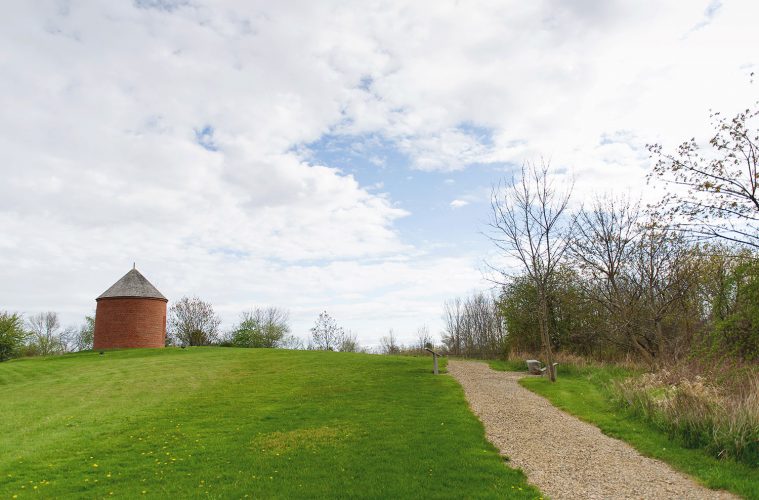In a lot of ways, a powder house was the colonial version of a self-storage facility. In the 18th century and well into the 19th century, every household needed gunpowder, but wise forebears stipulated that any amount over a pound had to be stored in a powder house, rather than a private home.
Every town had one, set well away from the populated areas, to store supplies for the battle against the British, as well as the gunpowder needed for building roads and even for hunting whales. While a number of these structures are still standing on the North Shore, few have been restored—and none with the exacting standards of Newburyport’s Powder House Park and Learning Center.
It’s no wonder; fixing up the 1822 structure was far from simple, as Tom Kolterjahn, one of two powder house keepers, can tell you. Currently co-president of the Newburyport Preservation Trust, which undertook the project and manages the site, Kolterjahn spearheaded the restoration as a hobby when he retired, along with a group of volunteers. They wound up investing nine years of planning, research, negotiation with state authorities, and, of course, physical restoration to bring it to fruition.
“It became a labor of love,” says Kolterjahn, who clearly enjoys his volunteer role as powder house keeper. Dressed in period attire, right down to a sharp bayonet hanging from a leather pouch at his side, he brandishes a large key, custom-made by a “whitesmith”—an artisan with more skill than a blacksmith—from Colonial Williamsburg, to open the matching lock on the heavy wooden door. Inside, the restored floor of the small round building is held down with wooden pegs—not nails, which could cause a spark. While Kolterjahn keeps his shoes on, he notes that the powder house keeper typically would remove his shoes, since soles might also have nails in them.
Kolterjahn is an engaging storyteller, pointing out the completely original domed brick ceiling and sharing stories about the history of the Powder House and Newburyport. While the building is only 18 feet across, it is packed with insights about life in the area in the 1800s. Shelves inside hold replicas of powder kegs— crafted by a cooper from Portsmouth’s Strawbery Banke interpretive center—labels for the kegs, flints, and a rifle. While the restoration of the structure is complete, ongoing fundraising efforts by the all-volunteer organization aim to add more professional museum displays.
Kolterjahn hopes that the success of the Newburyport restoration will inspire other towns, noting that Beverly, Haverhill, and Amesbury each have a powder house.
“Bit by bit, we hope to save them.”
Powder House Park
57 Low Street, Newburyport
(To the right of the Newburyport Armory)

